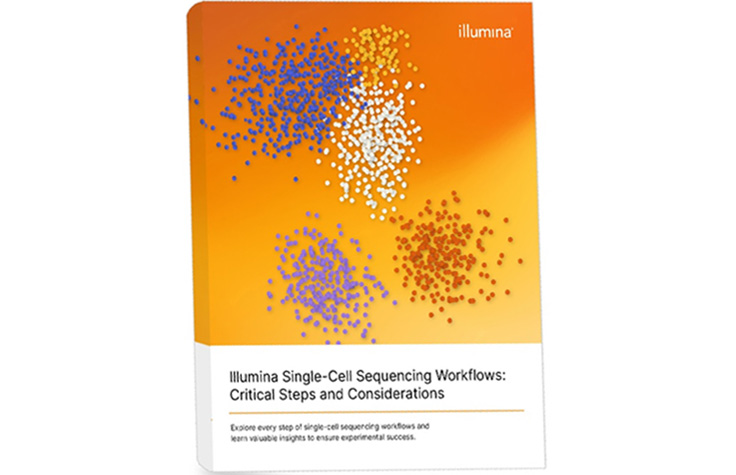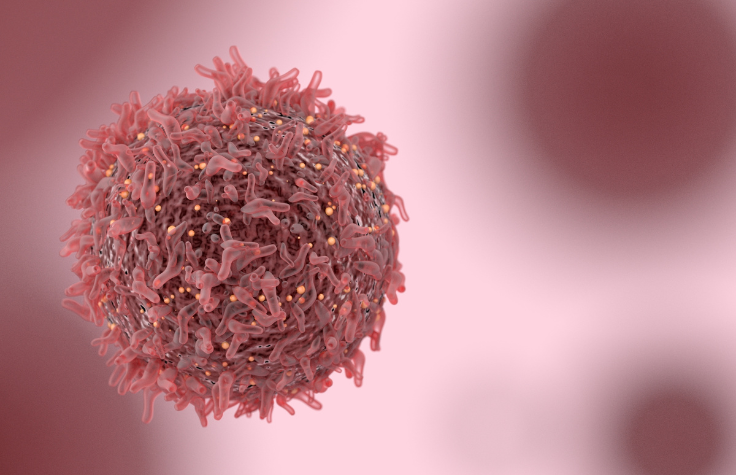Single-Cell and Ultra-Low-Input RNA-Seq
Introduction to single-cell RNA sequencing
Complex biological systems are determined by the coordinated functions of individual cells. Conventional methods that provide bulk genome or transcriptome data are unable to reveal the cellular heterogeneity that drives this complexity. Single-cell sequencing is a next-generation sequencing (NGS) method that examines the genomes or transcriptomes of individual cells, providing a high-resolution view of cell-to-cell variation.
Ultra-low-input and single-cell RNA sequencing (scRNA-Seq) methods enable researchers to explore the distinct biology of individual cells in complex tissues and understand cellular subpopulation responses to environmental cues. Highly sensitive scRNA-Seq approaches enhance the study of cell function and heterogeneity in time-dependent processes such as differentiation, proliferation, and tumorigenesis.

Single-cell sequencing eBook
Learn more about single-cell sequencing workflows and key considerations.
Download eBookAdvantages of single-cell RNA-Seq
Single-cell and ultra-low-input RNA-Seq methods are powerful tools for studying the transcriptome in an unbiased manner from minimal input. Single-cell RNA sequencing can be applied across diverse research areas, with the potential to transform our understanding of cellular function in health and disease.
- Robust transcriptome analysis down to single-cell input levels for high-quality samples
- Integrated protocol proceeds directly from whole cells and preserves sample integrity
- High resolution analysis enables discovery of cellular differences usually masked by bulk sampling and bulk RNA-Seq methods
Single-cell sequencing and analysis workflow video
Single-cell sequencing can reveal the cell types present and how individual cells are contributing to the function of complex biological systems. See how you can use Illumina single-cell sequencing workflows, from tissue preparation through analysis.
Difference between bulk and single-cell RNA-Seq
Bulk RNA-Seq excels at providing insights into the entire tissue. It can help researchers understand the big picture and may be used as an untargeted approach for new discoveries. However, bulk RNA-Seq may fail to capture transcripts from rare but biologically relevant subpopulations, such as stem cells or circulating tumor cells. In addition, a low-expressing gene identified in bulk RNA-Seq may instead be robustly expressed in a rare cell type.
In contrast, single-cell RNA sequencing data are generated for individual cells, enabling deeper insights into the nuanced distinctions between cells within the same sample. The variation between individual cells can be immense, even when examining the same cellular subpopulation. This is especially true of the transcriptome, a more reactive and dynamic -ome compared to the relative stability of the genome and epigenome. Examining complex organs and tissues at single-cell resolution is critical to advancing our understanding of many diseases and systems.
High- and low-throughput scRNA-Seq methods
Single-cell RNA sequencing methods can be distinguished by cell throughput.
High-throughput single-cell profiling methods are recommended for researchers wishing to examine hundreds to millions of cells per experiment in a cost-effective manner.
Low-throughput methods are recommended for scientists who need to process dozens to a few hundred cells per experiment. Low-throughput approaches generally include mechanical manipulation or cell sorting/partitioning technologies.
Explore workflows for both high- and low-throughput single-cell RNA-Seq methods below. Both methods utilize proven Illumina sequencing by synthesis (SBS) chemistry. Illumina sequencing systems offer high data accuracy with flexible throughput to deliver a proven NGS solution for single-cell sequencing studies, regardless of scale.
High-throughput workflow for ultra-low-input and single-cell RNA-Seq
Gain valuable insight into gene expression with this sensitive, scalable, and cost-effective high-throughput scRNA-Seq method.
Low-throughput workflow for ultra-low-input and single-cell RNA-Seq
The low-throughput method below is recommended for researchers who wish to process small numbers of cells for a particular study, such as dozens to a few hundred cells per experiment.
Single-cell RNA-Seq data analysis and insights
Accessible and highly scalable single-cell RNA-Seq solution for mRNA capture, barcoding, and library prep with a simple manual workflow that doesn't require a cell isolation instrument.
- RNA-Seq alignment and matching to annotated genes for transcript reads
- Cell-barcode and UMI error correction for the barcode reads
- Genotype-based and genotype-free sample demultiplexing
A powerful cloud-based multiomic analysis and interpretation software, enabling sample to insight workflows with interactive visualizations, infrastructure scalability, and secure data management.
- Suitable for both small data sets and large-scale multiomic studies, supporting multiple sample types
- Link results to curated biological knowledge for deeper interpretation
- Reveal insights from large, complex datasets and get publication-ready figures
Applications of single-cell sequencing
Single-cell sequencing enables a broad range of applications, allowing researchers to make significant strides in understanding complex biological systems. Examples of popular applications include:
- Cancer research: scRNA-Seq has powered breakthrough studies of tumor heterogeneity, rare treatment-resistant cell populations, and immunotherapy responses.
- Stem cell biology: Single-cell sequencing approaches enable characterization of transcriptional heterogeneity in stem cell subpopulations.
- Immunology research: scRNA-Seq methods are advancing studies of immune cell development, autoimmune diseases, and rare immune cell subpopulations.
- Neurobiology: Researchers can utilize single-cell RNA-Seq to study brain pathology and perform disease-specific transcriptome profiling studies.
Spotlight on single-cell transcriptomics
Learn more about emerging applications of scRNA-Seq and uncover deep insights into complex cellular biology.
Single-cell RNA-Seq FAQ
Single-cell sequencing resources
Single-cell webinars

How to explore single-cell data
This presentation introduces the basic steps in tertiary scRNA-Seq analyses, highlighting how different cell populations can react to external factors.
.png)
Single-cell RNA sequencing across multiple sites
Technology advances enable single-cell RNA-Seq from multiple sites in one workflow. Learn about data quality, recovery of fragile cell types, and more.

Single-cell multiomics: Beyond RNA-Seq
Dr. Michael Kelly uses single-cell sequencing methods to study auditory development and supports research at the NCI Center for Cancer Research.
Featured application notes
NextSeq 1000 and NextSeq 2000 single-cell RNA sequencing solution
This cost-effective, flexible workflow measures gene expression in single cells and offers high-resolution analysis to discover cellular differences usually masked by bulk sampling methods.
Single-cell gene expression + ATAC-Seq solution
Unify single-cell gene expression and chromatin accessibility to help reveal cellular mechanisms driving gene regulation.
Single-cell and spatial sequencing on NextSeq 1000 and 2000 Systems
Learn how XLEAP-SBS chemistry combined with 10x Genomics single-cell and spatial solutions enable high-resolution genomics on the NextSeq 1000 and NextSeq 2000 Systems.
Keep exploring
Cancer single-cell analysis
Single-cell sequencing powered by NGS can examine the genomes or transcriptomes of individual cancer cells, providing a high-resolution view of cell-to-cell variation.
CITE-Seq
CITE-Seq (cellular indexing of transcriptomes and epitopes) is a sequencing-based method that simultaneously quantifies cell surface protein and transcriptomic data within a single cell readout.
Transcriptomics
Profile the transcriptome for a better understanding of biology. Explore various techniques and learn how the discovery power of RNA-seq can empower high-impact research.
Multiomics
Combine data from genomics, transcriptomics, epigenetics, and proteomics to better connect genotype to phenotype.
ATAC-Seq
Evaluate regions of open chromatin across the genome, in either bulk cell populations or single cells at high resolution.
Exploring the tumor microenvironment
Dr. Alex Swarbrick discusses the advantages of single-cell sequencing for studying tumor microenvironments in breast and prostate cancers.
Interested in receiving newsletters, case studies, and information on sequencing methods? Enter your email address.
References
- Jovic D, Liang X, Zeng H, Lin L, Xu F, Luo Y. Single‐cell RNA sequencing technologies and applications: A brief overview. Clin Transl Med. 2022;12(3):e694. doi:10.1002/ctm2.694
- Baccin C, Al-Sabah J, Velten L, et al. Combined single-cell and spatial transcriptomics reveals the molecular, cellular and spatial bone marrow niche organization. Nat Cell Biol. 2020;22(1):38-48. doi:10.1038/s41556-019-0439-6
- Papalexi E, Satija R. Single-cell RNA sequencing to explore immune cell heterogeneity. Nat Rev Immunol. 2018;18(1):35-45. doi:10.1038/nri.2017.76
- Chen G, Ning B, Shi T. Single-Cell RNA-Seq Technologies and Related Computational Data Analysis. Front Genet. 2019;10:317. doi:10.3389/fgene.2019.00317
- Sant P, Rippe K, Mallm JP. Approaches for single-cell RNA sequencing across tissues and cell types. Transcription. 2023;14(3-5):127-145. doi:10.1080/21541264.2023.2200721
- Wiegleb G, Reinhardt S, Dahl A, Posnien N. Tissue dissociation for single-cell and single-nuclei RNA sequencing for low amounts of input material. Frontiers in Zoology. 2022;19(1):27. doi:10.1186/s12983-022-00472-x
- Stamper CT, Marchalot A, Tibbitt CA, et al. Single-cell RNA sequencing of cells from fresh or frozen tissue reveals a signature of freezing marked by heightened stress and activation. Eur J Immunol. 2024;54(4):e2350660. doi:10.1002/eji.202350660
